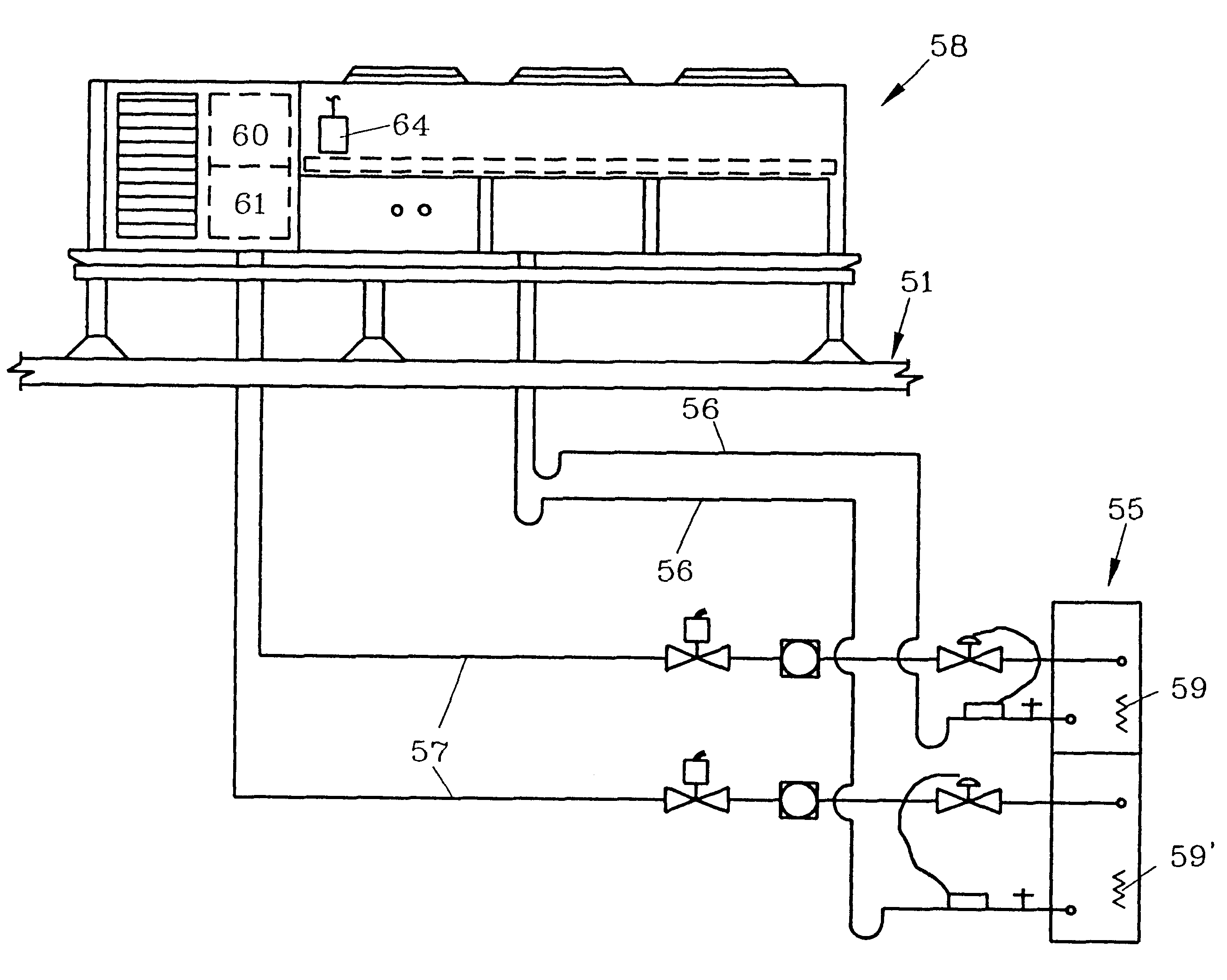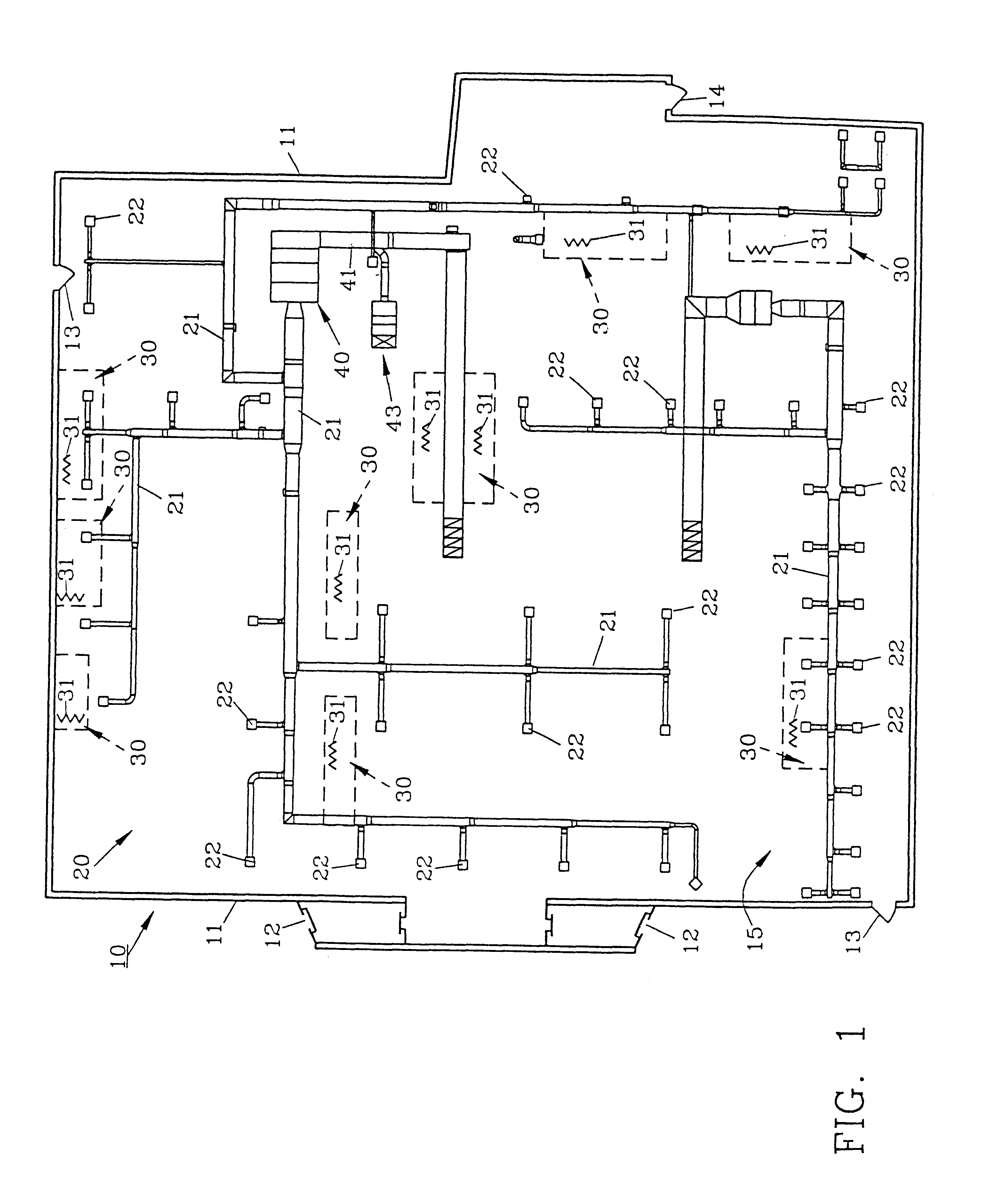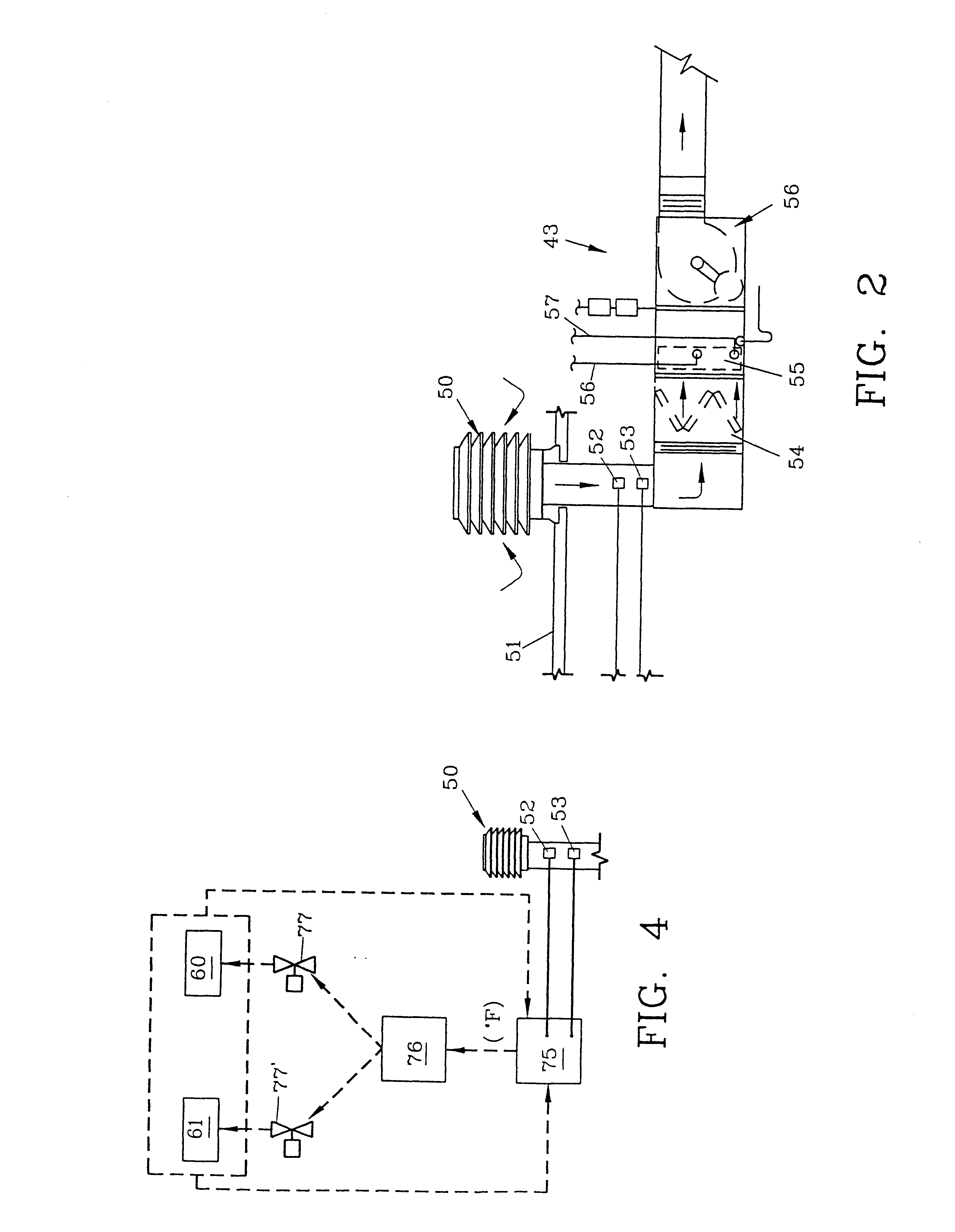HVAC system and method for conditioning air
- Summary
- Abstract
- Description
- Claims
- Application Information
AI Technical Summary
Benefits of technology
Problems solved by technology
Method used
Image
Examples
Embodiment Construction
For a better understanding of the invention and its operation, turning now to the drawings, FIG. 1 demonstrates a schematic representation of a typical grocery store 10 with the roof removed to view the contents and components therein. As shown, outside wall 11 surrounds the interior of store 10 having front doors 12, auxiliary doors 13 and a rear door 14. Preferred HVAC system 20 includes conventional air ductwork 21 with diffusers 22 throughout for delivering conditioned air within store 10.
As is typical, grocery store 10 includes a series of refrigerated furniture cases 30 (shown in dotted lines) which may be both the low temperature (0.degree. F.) and medium temperature (32-0.degree. F.) types for displaying respectively, frozen foods, meat and dairy products. Nine such furniture cases are shown in FIG. 1 although the exact number will vary depending on the size of the store and the demands of its customers.
Each refrigerant furniture case 30 includes evaporator cooling coils 31 ...
PUM
 Login to View More
Login to View More Abstract
Description
Claims
Application Information
 Login to View More
Login to View More - R&D
- Intellectual Property
- Life Sciences
- Materials
- Tech Scout
- Unparalleled Data Quality
- Higher Quality Content
- 60% Fewer Hallucinations
Browse by: Latest US Patents, China's latest patents, Technical Efficacy Thesaurus, Application Domain, Technology Topic, Popular Technical Reports.
© 2025 PatSnap. All rights reserved.Legal|Privacy policy|Modern Slavery Act Transparency Statement|Sitemap|About US| Contact US: help@patsnap.com



